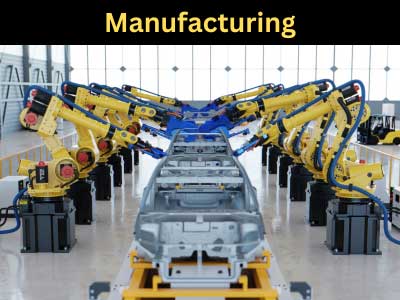Key Takeaway
Training employees for advanced manufacturing technologies is crucial for staying competitive. Start by understanding the specific skills needed for new technologies. Interactive and hands-on training methods are most effective, allowing employees to learn by doing. Incorporating simulation tools, e-learning platforms, and augmented reality can enhance the training experience, making complex concepts easier to grasp.
Effective training not only boosts productivity but also increases employee confidence and reduces errors. Regularly updating training programs to keep pace with technological advancements ensures that your workforce remains skilled and adaptable in a rapidly changing industry.
Identifying Skill Gaps in the Workforce
The first step in training employees for advanced manufacturing technologies is identifying the skill gaps that exist within the current workforce. As manufacturing technologies evolve, the skills required to operate new systems, such as robotics, artificial intelligence (AI), and data analytics, become increasingly specialized. For new engineers, it is critical to understand that many workers may lack experience with these emerging technologies.
Conducting skill assessments can help pinpoint areas where employees need development. Managers and engineers should evaluate both technical abilities and soft skills like problem-solving and adaptability. This ensures that training programs focus on the specific skills needed to operate and maintain advanced systems. By identifying these gaps, companies can tailor their training efforts to meet the technological demands of modern manufacturing and prepare their workforce for future challenges.

Designing Effective Training Programs for Manufacturing Technologies
Designing a training program that addresses the identified skill gaps requires careful planning and a focus on practicality. For advanced manufacturing technologies, the training program must provide a blend of theoretical knowledge and hands-on experience. It’s not just about teaching employees how to operate new machinery but also helping them understand the underlying concepts that drive these technologies.
Training programs should be designed with clear objectives. For instance, employees should know not only how to use specific tools but also how to troubleshoot issues, ensure optimal performance, and apply continuous improvement strategies. The curriculum should include a mix of classroom instruction, technical manuals, and interactive tutorials to keep the learning process engaging. Structured modules can cover a wide range of topics, from robotics programming to the principles of IoT in manufacturing.
By implementing a well-rounded and detailed training plan, companies ensure their workforce is capable of handling advanced systems, and engineers gain the skills to lead the next wave of technological innovation in manufacturing.
Hands-On Learning and Simulation-Based Training
Hands-on learning is one of the most effective methods for training employees in advanced manufacturing technologies. While theoretical knowledge is essential, employees need to physically interact with the machines and technologies they will be working with. Simulation-based training offers an excellent bridge between theory and practice by allowing employees to work in a controlled, risk-free environment.
For example, in a manufacturing setting, simulation tools can replicate real-life scenarios like operating automated systems, troubleshooting equipment failures, or navigating complex production lines. These virtual environments let employees experiment with different functions, learn from mistakes, and hone their problem-solving skills—all without impacting the actual production process. New engineers benefit greatly from simulation-based training, as it prepares them to tackle real-world challenges with confidence.
By focusing on hands-on experiences and simulations, companies not only improve the skills of their workforce but also boost employee confidence and reduce downtime caused by human error. This method helps create a workforce that is adaptable and ready to engage with the latest manufacturing technologies.
Leveraging E-Learning and Digital Tools for Training
In today’s digital age, e-learning and digital tools are essential for delivering effective training programs. E-learning platforms provide flexibility, allowing employees to learn at their own pace and revisit training materials as needed. For advanced manufacturing technologies, digital tools such as online courses, webinars, and interactive modules can provide detailed instruction on complex subjects like machine learning, robotics, and automation.
E-learning platforms also enable companies to reach a larger workforce, regardless of location. Employees can access training materials remotely, making it easier for companies to upskill their workforce without disrupting production schedules. Additionally, many digital training programs use data tracking features to monitor employee progress, ensuring that learning goals are met efficiently.
For engineers, e-learning offers the opportunity to gain advanced technical knowledge and stay updated on the latest industry trends. Combining e-learning with in-person training and hands-on practice creates a comprehensive learning environment that prepares employees to manage the complexities of modern manufacturing.
Measuring the Effectiveness of Training Programs
It’s important for companies to evaluate the success of their training programs to ensure that employees are gaining the necessary skills. Measuring the effectiveness of a training program can be done through various methods, such as assessments, performance evaluations, and feedback surveys.
For engineers, tracking employee progress through key performance indicators (KPIs) helps identify areas where further training may be needed. For instance, metrics like machine downtime, error rates, and production output can reveal how well employees are applying their new skills. Post-training evaluations should also include feedback from employees about the training process, allowing companies to refine and improve the curriculum.
By regularly measuring the impact of their training programs, companies can ensure that employees are equipped with the skills required to operate advanced technologies. This not only boosts productivity but also creates a culture of continuous learning and improvement within the manufacturing environment.
Conclusion
Training employees for advanced manufacturing technologies is an ongoing process that requires careful planning, hands-on experience, and the use of digital tools. By identifying skill gaps, designing effective training programs, and regularly measuring their impact, companies can prepare their workforce for the future of manufacturing. For engineers, staying current with emerging technologies through continuous learning will be key to driving innovation and success in the evolving manufacturing landscape. Embracing comprehensive training methods ensures that the workforce remains adaptable, skilled, and ready to take on the challenges of modern manufacturing.
